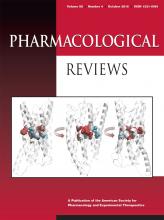2016年9月15日(北京时间),国际著名学刊《药理学综述》(Pharmacological Reviews, IF=18.39)在线发表了由中国科学院上海药物研究所/复旦大学药学院王明伟研究员率领来自荷兰、英国、澳洲、丹麦、美国、韩国和中国等七国十四名科学家撰写的题为“Glucagon-Like Peptide-1 and Its Class B G Protein–Coupled Receptors: A Long March to Therapeutic Successes”(“胰高血糖素样肽-1及其B型G蛋白偶联受体:走向成功治疗的长征”,http://pharmrev.aspetjournals.org/content/68/4/954.full)的领域回顾性论文。这篇长达60页、超过5.5万字、引用546篇文献的综述耗时两年完成,对胰高血糖素样肽-1及其受体在过去30多年里的研究成果进行了概括性的总结。作者中既有该领域基础研究的“牛人”(如英国的Dan Donnelly和澳洲的Patrick Sexton),或新药开发的“大伽”( 如丹麦的Jesper Lau和美国的Laurence Miller),也有学术声望日增的新秀(如荷兰的Chris de Graaf、澳洲的Denise Wootten和中国的杨德华等)。正像一位审稿人所说:“这确实是一篇由学术界和工业界的国际专家共同撰写、涉及临床前和临床研究内容的综述。它涵盖了数个多肽、药物和候选药物作用机理的基础和结构信息,治疗指征包括2型糖尿病、肥胖症和其他形式的胰岛素调节紊乱。这是一篇精心取材和执笔的要作,应该祝贺作者们,特别是王明伟教授为把这个专家团队聚集在一起所付出的努力。”
胰高血糖素样肽-1是促胰岛素分泌作用最强的肠肽类激素,通过刺激胰岛素分泌、抑制胰高血糖素分泌、延缓胃排空和降低食欲来控制外周血糖。胰高血糖素样肽-1受体是B型G蛋白偶联受体家族的成员之一,在2型糖尿病和肥胖症的发病机制中扮演重要角色,为当今公认的抗糖尿病药物作用靶点。目前已经有艾塞那肽和利拉鲁肽等多个胰高血糖素样肽-1类药物上市。王明伟研究员领衔的课题组在胰高血糖素样肽-1受体的结构与功能研究领域已经辛勤耕耘了14余年,先后取得了多项重要成果。
这篇由王明伟研究员策划组织的综述从胰高血糖素样肽-1及其受体的发现历程、生理功能、分子结构、信号通路、作用机制、研究手段、药物开发和临床疗效等方面系统而全面地展现了该研究领域的历史与现状,对胰高血糖素样肽-1受体的结构解析、功能研究和药物开发具有很高的参考价值。
A long field review was published by a group of international experts led by Ming-Wei Wang
A long field review entitled “Glucagon-Like Peptide-1 and Its Class B G Protein–Coupled Receptors: A Long March to Therapeutic Successes” (http://pharmrev.aspetjournals.org/content/68/4/954.full) was published online by Pharmacological Reviews, a world renowned scientific journal, on September 14, 2016 (EST, U.S.A.). This article was written by 14 authors from seven different countries (The Netherlands, U.K., Australia, Denmark, U.S.A., Korea and China) led by Professor Ming-Wei Wang (Shanghai Institute of Materia Medica, Chinese Academy of Sciences/School of Pharmacy, Fudan University). Sixty pages in length, containing more than 55,000 words and 546 references, this review took 2 years to prepare and comprehensively summarized the research achievements during the past 30 plus years in the area of glucagon-like peptide-1 and its receptors. Included in the author list are well-established research scientists (such as Dan Donnelly of U.K. and Patrick Sexton of Australia), respectable drug developers (such as Jesper Lau of Denmark and Laurence Miller of U.S.A.) and young talents whose academic reputation are on the rise (such as Chris de Graaf of The Netherlands, Denise Wootten of Australia and Dehua Yang of China). “The review is truly international with experts from both industry and academia, covering preclinical and clinical aspects, including very basic and structural information on the mechanism(s) of action of a number of peptides, drugs or drug candidates. The indications range from type 2 diabetes to obesity and other forms of insulin dysregulation. It is a major piece, well written and documented. The authors have to be commended, especially Professor Ming-Wei Wang, for his efforts in bringing together this team of experts”, commented by one of the referees of the paper.
Glucagon-like peptide-1 is the most effective incretin that promotes insulin release. It regulates glucose homeostasis via stimulating insulin secretion, suppressing glucagon release, slowing gastric empty and inhibiting food intake. Glucagon-like peptide-1 receptor is a member of class B G protein-coupled receptor family that plays a key role in the pathogenesis of type diabetes and obesity. It is thus a well-recognized target for anti-diabetic agents. There are several marketed glucagon-like peptide-1 mimicking drugs at present such as Exenatide and Liraglutide. The research team led by Professor Ming-Wei Wang has engaged in structural and functional studies on glucagon-like peptide-1 and its receptors for over 14 years where they made some important discoveries in this field.
Designed and organized by Professor Ming-Wei Wang, this article presents both historic aspects and current status of glucagon-like peptide-1 and its receptors in a systemic and comprehensive manner, in terms of discovery processes, physiological functions, molecular structures, signaling pathways, mechanisms of action, research aaproaches, drug development and clinical efficacies. It is of high value for the determination of glucagon-like peptide-1 receptor structure, elucidation of its functions and drug discovery based on this target.
About the cover: Homology model of GLP-1R illustrating the relative position of key residues involved in the receptor signaling bias. See the article by Wang et al. doi:10.1124/pr.115.011395.

下载地址:Glucagon-Like Peptide-1 and Its Class B G Protein-Coupled Receptors.zip


